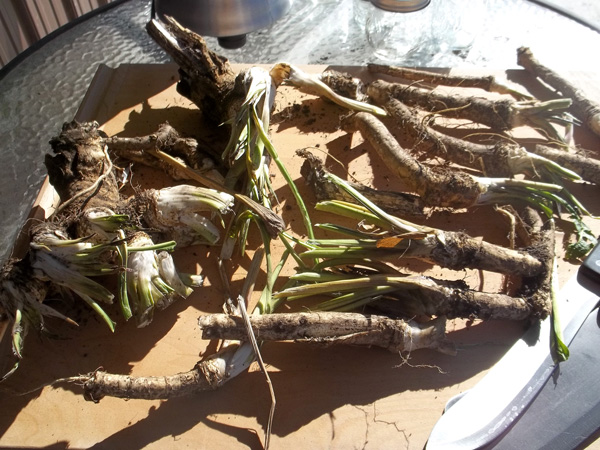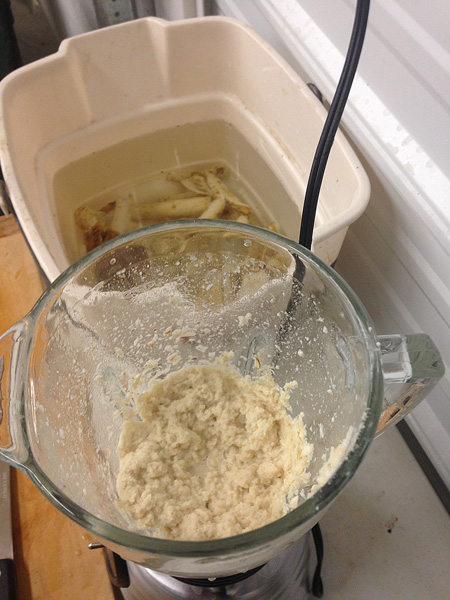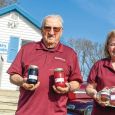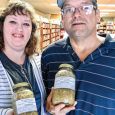The Gift of South Dakota
Subscriptions to South Dakota Magazine make great gifts!
Subscribe today — 1 year (6 issues) is just $29!
Delights of Horseradish
May 6, 2015
As a youngster, it was always fun to stay on the farm with Grandpa Tony. Between catching pigs by the tail, chasing chickens and firing rifles, what’s not to love about staying in the country with your grandparents. Grandpa said he was from that part of Germany where they were “luxombergers,” and I don’t recall many German aspects of his life — save one. At breakfast, Grandpa would put a pungent white something on his eggs. I tried it (it’s not for the faint of heart) and at the time it wasn’t for me, but thus I was introduced to the German table fare of horseradish.
Since gardening is fast upon us, it’s a good time to learn about how to partake in this special treat.
 |
| The horseradish roots. |
THE NOBLE HISTORY OF HORSERADISH
While my understanding of horseradish stretches all the way back to rural Lily, South Dakota, horseradish has a much longer and distinguished history. The Horseradish Information Council (there actually is one) reports that horseradish is a 3,000-year-old plant that was used as, among other things, an aphrodisiac. I’m not quite picturing how the smell of horseradish gets people excited like that, but my parents did have eight kids, so who am I to argue with science?
Horseradish is reported in history as early as 1,500 B.C. with early Greeks, and flourished through the Renaissance.
MY ROOTS HAVE ROOTS
Like city kids who understand that milk comes from a grocery store, I always knew that horseradish came from Mom. Whenever I ran out, all I had to do was stop by Mom’s freezer and get another reused jelly jar filled with the German delicacy. Then my Mom died.
The day we sorted things out at the house, I asked my older sister about the horseradish (it’s important to get your share of the family treasure and secrets). My elder sister, always the know-it-all, explained to me that you could just go out in the garden and dig up the roots. I thought that was a strange place for Mom to hide the horseradish, but sounded simple enough, especially when my sister offered to show me how to turn them into a jar of horseradish for my refrigerator.
I dug up a bucket of the plants and replanted them in my garden near Watertown. Looking at those dead plants and spindly roots, it was hard to imagine what weird science would turn them into something to put on my prime rib, but it did.
HOW DO YOU GROW IT?
Stick it in a hole, cover it with dirt and get out of the way. Horseradish functions more like a noxious weed than a vegetable. The challenge won’t be growing it, but containing it. My advice? Hoe and pluck liberally to avoid turning your garden into a horseradish nature preserve.
WHAT DO YOU DO WITH IT?
 |
| The concoction is blended, and Lee Schoenbeck throws caution to the wind by removing the lid. |
Here’s where the skill and tenacity of your average German comes into play. A friend once told me that if “you tell a German how to do something, they’ll find a way to do it harder.” The easiest way to get horseradish is off the shelf at your local grocery store. The German way goes like this:
Dig up the roots in the fall. You really can’t worry about digging up too much of the plant. The roots are what you are after. The plant looks like big tobacco leaves, and you discard that. The white (after you clean them) roots are then cut up into small pieces, and then … wait a minute. You better do this outside, or there won’t be enough aphrodisiac of any type to save your relationship after the deathly odor permeates the walls of your home.
After chopping, put the pieces in a blender that your spouse will never again allow to touch food, add vinegar and hit the button. Blend the roots to a soft consistency and you’re done. If your eyesight is something you value, don’t lift the blender lid to peek inside. On second thought, if you have a friend along and you want some laughs, do open the lid and have them peek inside to see if it looks done. Keep them away from sharp objects for the next hour or so.
Lee Schoenbeck grew up in Webster, practices law in Watertown, and is a freelance writer for the South Dakota Magazine website.










Comments